
Abu Sayyaf, officially known by the Islamic State as the Islamic State – East Asia Province, is a Jihadist militant and pirate group that followed the Wahhabi doctrine of Sunni Islam. It was based in and around Jolo and Basilan islands in the southwestern part of the Philippines, where for more than five decades, Moro groups had been engaged in an insurgency seeking to make Moro Province independent. The group was considered violent and was responsible for the Philippines' worst terrorist attack, the bombing of MV Superferry 14 in 2004, which killed 116 people. The name of the group was derived from Arabic abu, and sayyaf. As of April 2023, the group was estimated to have about 20 members, down from 1,250 in 2000. They used mostly improvised explosive devices, mortars and automatic rifles.
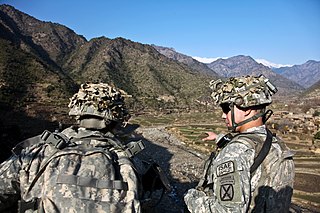
Operation Enduring Freedom (OEF) was the official name used by the U.S. government for both the first stage (2001–2014) of the War in Afghanistan (2001–2021) and the larger-scale Global War on Terrorism. On 7 October 2001, in response to the September 11 attacks, President George W. Bush announced that airstrikes targeting Al-Qaeda and the Taliban had begun in Afghanistan. Beyond the military actions in Afghanistan, Operation Enduring Freedom was also affiliated with counterterrorism operations in other countries, such as OEF-Philippines and OEF-Trans Sahara.
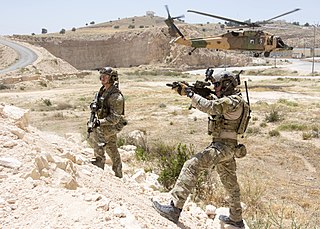
Special operations or spec ops are military activities conducted, according to NATO, by "specially designated, organized, selected, trained, and equipped forces using unconventional techniques and modes of employment." Special operations may include reconnaissance, unconventional warfare, and counterterrorism, and are typically conducted by small groups of highly trained personnel, emphasizing sufficiency, stealth, speed, and tactical coordination, commonly known as special forces.

Operation Enduring Freedom – Philippines (OEF-P) or Operation Freedom Eagle was part of Operation Enduring Freedom and the global War on Terror. The Operation targeted the various Jihadist terror groups operating in the country. By 2009, about 600 U.S. military personnel were advising and assisting the Armed Forces of the Philippines (AFP) in the Southern Philippines. In addition, by 2014, the CIA had sent its elite paramilitary officers from their Special Activities Division to hunt down and kill or capture key terrorist leaders. This group had the most success in combating and capturing Al-Qaeda leaders and the leaders of associated groups like Abu Sayyaf.
The 707th Special Mission Group is an elite counter-terrorism unit of the Republic of Korea Army Special Warfare Command.
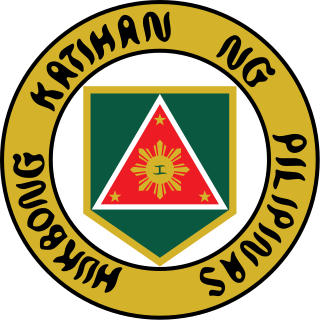
The Philippine Army (PA) is the main, oldest and largest branch of the Armed Forces of the Philippines (AFP), responsible for ground warfare and as of 2021 had an estimated strength of 143,100 soldiers backed by 131,000 ready reserves. The service branch was established on December 21, 1935, as the Philippine Commonwealth Army. The Philippine Army has engaged in many conflicts including the ongoing Communist rebellion in the Philippines, the Moro conflict and, alongside other national military forces, in conflicts of international scope.
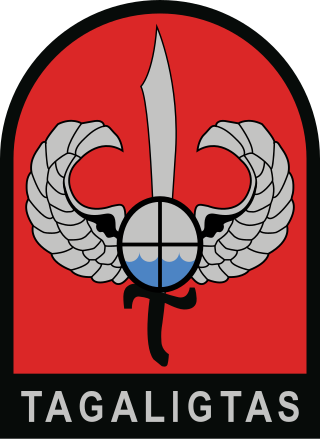
The Special Action Force (SAF) is the elite unit of the Philippine National Police founded by Fidel V. Ramos, later the twelfth president of the Philippines.

The Naval Special Operations Command (NAVSOCOM) is a separate command of the Philippine Navy trained in special operations, sabotage, psychological and unconventional warfare and is heavily influenced by the United States Navy SEALs. NAVSOCOM is headquartered at Naval Base Heracleo Alano Sangley Point, Cavite City. It has eleven units located across the Philippines, from Naval Operating Base San Vicente at Santa Ana, Cagayan in the north to Naval Station Zamboanga in the south.

The 1st Special Forces Group (Airborne) (1st SFG) (A) is a unit of the U.S. Army Special Forces operating under the United States Pacific Command. It is designed to deploy and execute nine doctrinal missions throughout the Indo-Pacific Command area of operations: unconventional warfare, foreign internal defense, direct action, counter-insurgency, special reconnaissance, counter-terrorism, information operations, counterproliferation of weapon of mass destruction, and security force assistance.

The 1st Infantry Division, Philippine Army, nicknamed Tabak Division, is the Philippine Army's primary infantry unit, and specializes in anti-guerrilla warfare. The division has been involved in combating terrorists in Southern Mindanao.

The 2nd Commando Regiment is a special forces unit of the Australian Army and is part of Special Operations Command. The regiment was established on 19 June 2009 when the 4th Battalion RAR (Commando) was renamed. It is based at Holsworthy, New South Wales. The 2nd Commando Regiment trains and has served with coalition special forces units, and is highly regarded by these units. The regiment has been involved in operations in East Timor, Iraq and Afghanistan, where it was used in a direct action warfighting role. It has also been involved in domestic security operations including the 2006 Commonwealth Games and the 2014 G20 Leaders Summit. The regiment is the Command's capability lead for strike and recovery.

The Special Forces Regiment (Airborne) is a Special Operations Forces unit of the Philippine Army. The unit is based on and continually trains with its American counterpart, the U.S. Army Special Forces (Green Berets).
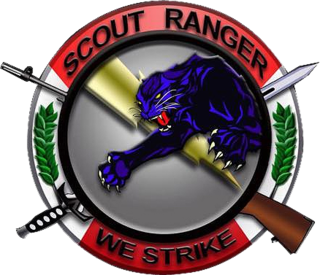
The Scout Rangers, known officially as the First Scout Ranger Regiment, is a Philippine Army unit specializing in anti-guerrilla jungle warfare, raids, ambushes, close quarters combat, urban warfare and sabotage.

The Armed Forces of the Philippines Special Operations Command (AFPSOCOM) is the unified special operations command of the AFP. It is responsible for planning, conducting, and supporting special operations.

The U.S. Army Special Forces traces its roots as the Army's premier proponent of unconventional warfare from purpose-formed special operations units like the Alamo Scouts, Philippine guerrillas, First Special Service Force, and the Operational Groups (OGs) of the Office of Strategic Services. Although the OSS was not an Army organization, many Army personnel were assigned to the OSS and later used their experiences to influence the forming of Special Forces.
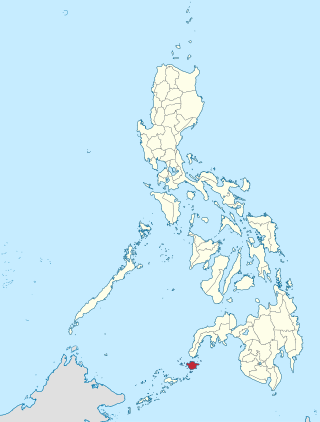
Battle of Basilan was a military offensive launched by the Philippine military to apprehend two lead commanders in the Abu Sayyaf Islamic militia wanted for corruption, money laundering, and terrorism related charges. The main cause of the operation was Sayyaf leader Indama and his followers threatening and attempting to extort money from a circumferential road network. The two-day offensive ended with both suspects evading capture and the island of Basilan falling under government authority. Both the army and MNLF collaborated in fighting alongside for a duration of the operation the first such instance since a truce. However collaborators within the Sayyaf militia included members of the MNLF who sympathized with their cause or had public relations with some of the militants.

Delfin Negrillo Lorenzana, OLH, KGOR is a retired Philippine Army general who currently serves as the Chairman of the Bases Conversion and Development Authority since 2022. He previously served as Secretary of National Defense in the Cabinet of President Rodrigo Duterte from 2016 to 2022. He served in the Philippine Army from 1973 to 2004.

Cirilito Elola Sobejana is a retired Philippine Army general who served as the 55th Chief of Staff of the Armed Forces of the Philippines under President Rodrigo Duterte. He is also known for having been awarded the Armed Forces of the Philippines Medal of Valor in 1995 for his valiant actions in Basilan against the extremist guerrilla group Abu Sayyaf.

Carlito Guancing Galvez Jr. is a retired Philippine Army general serving as the Senior Undersecretary and briefly as officer-in-charge of the Department of National Defense since 2023 and Presidential Adviser on the Peace Process since 2018. He also served as the Chief Implementer of the Philippines' Declared National Policy Against COVID-19. In November 2020, he was appointed as the country's COVID-19 vaccine czar, and was responsible for leading the government's efforts in bringing into the country about 245.23 million doses of COVID-19 vaccines as of May 2022 beginning in 2021 despite the global vaccine shortage. Prior to this, he also previously served as the 50th Chief of Staff of the Armed Forces of the Philippines from April to December 2018.
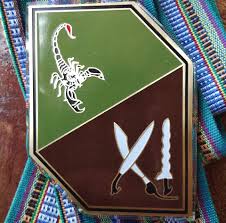
The 11th Infantry Division, Philippine Army, also called the Alakdan Division, is one of the Philippine Army's infantry units in Mindanao. Currently still forming, the Division is expected to complete its equipment and manpower requirements by 2022. It is the youngest of all the infantry divisions of the Army and will have 4,500 troops when fully formed.
























